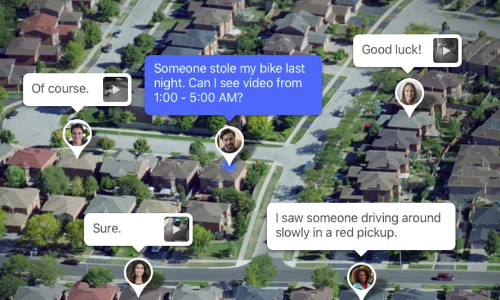Smart home is about making lives easier. It’s about connecting home devices, door locks, sensors to the Internet so that they can talk to one another. The so-called Internet of Things (IoT) can have various application modes, depending on the type of residences where IoT is applied.
Smart home is about making lives easier. It’s about connecting home devices, door locks, sensors to the Internet so that they can talk to one another. The so-called Internet of Things (IoT) can have various application modes, depending on the type of residences where IoT is applied.
IoT will be applied differently in a single house and an apartment. In the former case, a smart home is set up just within a single household. In the latter case, there are public spaces and equipment and facilities that will be shared among residents in an apartment. As such, the concept of IoT will be implemented with its unique characteristics in a residential community.
In order to pool information and make it available for all residents in a community, a mobile app is often used. Smart home enabler Vivint, for example, recently introduced the Streety app that allows homeowners to view video footage from their neighbors’ security cameras.
 Through a network of shared residential cameras, the Streety app allows users in
Through a network of shared residential cameras, the Streety app allows users in
a community to view shared video footage from their neighbors’ security cameras.
In a standard smart home deployment, users will be able to watch footage only from their own cameras. With the Streety app, however, homeowners will be able to watch footage or live streaming from all participating cameras in a community, thus greatly enhancing their visibility.
“When something happens like a bike is stolen, sometimes you have a good angle, sometimes you don’t, depending on where your cameras are,” said Colby Winegar, VP of Strategic Business Development at Vivint. “It’s a very cumbersome process if you have to go down the whole neighborhood to get the clips.”
 Espen Schrøder, Chief
Espen Schrøder, Chief
Operating Officer at Sfty
Through a network of shared residential cameras, the Streety app allows users in a community to keep an eye on their kids, cars and property through live video feeds and use recorded video clips to investigate incidents.
Sfty, a startup based in Norway, has developed a fire-detection system that similarly pools resources in a community. The Sfty system links smoke detectors in every apartment in a building. And when fire is detected in one apartment, alerts will be sent to other residents in the building via the Sfty app. Since the residents are notified early, they have sufficient time to evacuate the building, according to Espen Schrøder, Chief Operating Officer at Sfty.
Because the Sfty system knows exactly from which apartment the fire started, the fire department will know where to go first, Schrøder added.
The Internet-connected smoke detector also has a motion sensor built-in to detect burglary. When motion is detected in one apartment, a neighbor next door may also be notified through the Sfty app. The neighbor can then verify if there was indeed a burglary by checking if the apartment’s door has been opened.
“Sfty’s all-in-one safety device has smoke detector, burglar alarm, temperature sensor and humidity sensor functionalities. You can invite friends, family and neighbors to your network to monitor your device and be notified in case of an alert,” Schrøder added.
App as service portal in apartments
A mobile app can also be utilized to manage access control in an apartment. Malaysia-based apartment solution provider i-Neighbor has developed an app to turn a resident’s smartphone into an elevator or garage access card. With the app, a resident will only be able to get off on his or her floor and common areas.
 Aiden Teh, Business
Aiden Teh, Business
Development Manager at
i-Neighbor
The mobile app can also serve as an intercom to speak with visitors at the front door. Also, there is a panic button functionality in the app to instantly contact security or emergency contacts in case of an emergency.
In fact, the mobile app has more than 20 functionalities to provide apartment related services. Among them is facility booking for a gym, badminton court, etc. i-Neighbor also makes hardware like smart locks, which, if installed on a public facility, can be unlocked via the mobile app during the booked period.
i-Neighbor’s Business Development Manager Aiden Teh said the company’s competitiveness lies in the hardware development capability enabled by its parent company Fingertec. As an access control solution provider, Fingertec has been selling hardware products for 18 years, Teh said.
Intercom as the user interface
Another device that is commonly deployed in apartment buildings is intercom, which allows residents to talk to neighbors or call the management.
 Joel Liu, Vice President of
Joel Liu, Vice President of
HomeScenario
In terms of security capability, the intercom also has access control, alarm system and surveillance functions. “Intercom is the user interface to provide apartment services and the portal of smart buildings,” said Joel Liu, Vice President of Taiwan-based smart building solution provider HomeScenario.
HomeScenario’s intercom allows residents to see and talk with their visitors before unlocking the door. Upon granting access, the elevator will be triggered to go to the first floor for the guest, who may reach only the resident’s floor, Liu said.
To offer surveillance, the intercom may be used to view live video feed from a security camera. In addition, HomeScenario’s intercom also has a panic button and can send push notifications to smartphones of the closed ones if there is an accident.
AmRoad Technology Inc. provides a very similar intercom system, which is designed to integrate functionalities from SOS button, camera monitoring, door access, to facial recognition and license plate recognition. “Layers of functionalities may be added one by one per client demand,” said James Su, President of AmRoad.
 James Su, President of
James Su, President of
AmRoad Technology
Su pointed out that a fire or life-threatening accident require much faster response time. The intercom, besides being a smoke detector, can record a SOS voice message to pass to family members.
The company uses the SIP protocol, which is used in telephones, to send the SOS message. “A phone call to another country will always connect, but it may not be the case if the call is made via computers,” Su said. Wi-Fi connection may be suitable for public notices in which great amounts of data are broadcast while immediate transmission is not required, he explained.
The proactive camera
Cameras play important roles when it comes to maintaining home security. They are deployed in almost any communities. Netherlands-based Amaryllo International B.V offers IP cameras that take a “proactive approach” to prevent intrusion or burglary, according to the company’s president CT Marcus Yang.
The cameras are embedded with high-power CPU to perform visitor auto tracking. The cameras’ AI can distinguish people, animals and different faces instantly. “The camera will say ‘Hello’ when it sees a visitor, recognizes who you are, so that a potential thief or burglar knows he or she is being monitored,” Yang said.